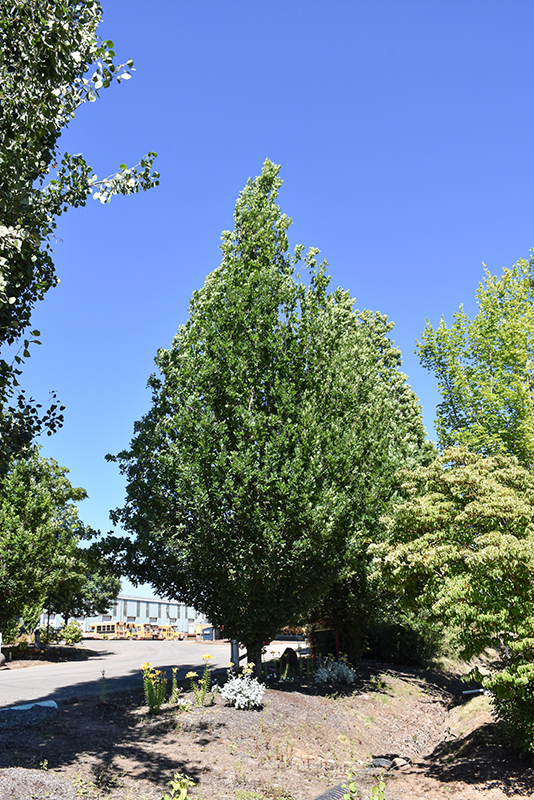Height: 45 feet Spread: 10 feet
Sunlight:
Hardiness Zone: 4a Brand: J. Frank Schmidt & Son Co. Description: An impressive tall tree with a columnar, tightly fastigiate habit of growth and yellow to tawny yellow fall color; ideal for formal screening, or as a vertical accent in the landscape; glossy, dark green summer foliage is mildew resistant Ornamental Features Oak, Skinny Genes is primarily valued in the landscape for its rigidly columnar form. It has dark green deciduous foliage. The glossy lobed leaves turn outstanding shades of yellow, orange and brown in the fall. However, the fruit can be messy in the landscape and may require occasional clean-up. Landscape Attributes Oak, Skinny Genes is a dense deciduous tree with a strong central leader and a narrowly upright and columnar growth habit. Its average texture blends into the landscape, but can be balanced by one or two finer or coarser trees or shrubs for an effective composition. This tree will require occasional maintenance and upkeep, and is best pruned in late winter once the threat of extreme cold has passed. It is a good choice for attracting birds and squirrels to your yard. It has no significant negative characteristics. Oak, Skinny Genes is recommended for the following landscape applications; Planting & Growing Oak, Skinny Genes will grow to be about 45 feet tall at maturity, with a spread of 10 feet. It has a low canopy with a typical clearance of 6 feet from the ground, and should not be planted underneath power lines. As it matures, the lower branches of this tree can be strategically removed to create a high enough canopy to support unobstructed human traffic underneath. It grows at a medium rate, and under ideal conditions can be expected to live to a ripe old age of 100 years or more; think of this as a heritage tree for future generations! This tree should only be grown in full sunlight. It prefers to grow in average to moist conditions, and shouldn't be allowed to dry out. This plant should be periodically fertilized throughout the active growing season with a specially-formulated acidic fertilizer. It is not particular as to soil pH, but grows best in rich soils. It is highly tolerant of urban pollution and will even thrive in inner city environments. This particular variety is an interspecific hybrid, and parts of it are known to be toxic to humans and animals, so care should be exercised in planting it around children and pets. Special Attributes This is a cross between White Oak and Red Oak. It starts producing acorns between 20 and 25 years of age. The acorns are 1-1 1/4 inch and can take 1 to 2 years to mature. The leaves can stay on the tree well into winter![]()
![]()
![]()
![]()
![]()
![]()
![]()
![]()
![]()
![]()
![]()


